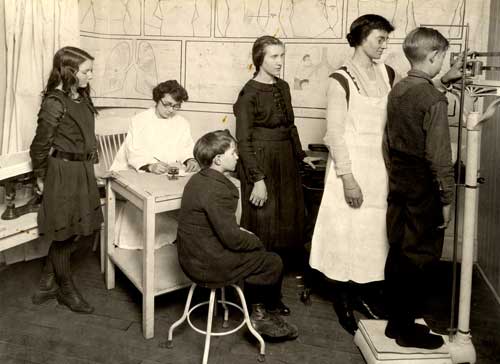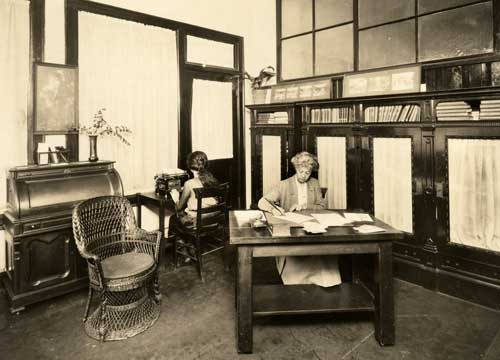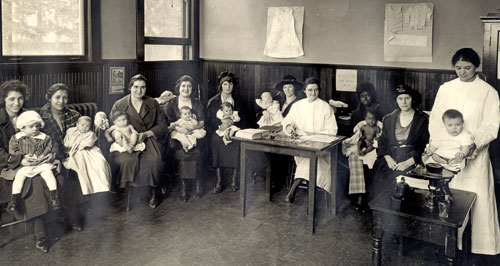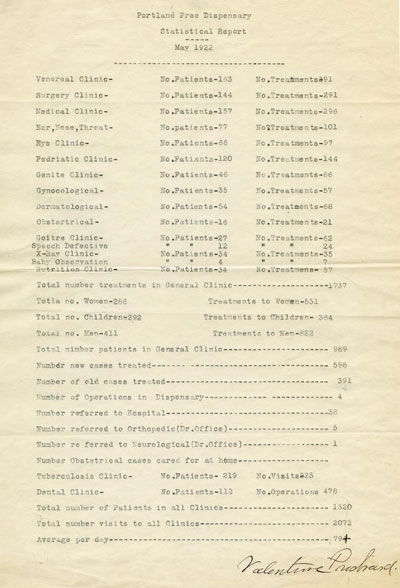The People's Institute and the Portland Free Dispensary

The field of public health in Oregon, like the United States, was aided by the rise of local and state health agencies as well as citizens’ organizations. Settlement houses, such as Jane Addams’ Hull House in Chicago, sought to improve the lives of immigrants in urban areas through educational and social services. By the turn of the century, many settlement houses had transformed into public health centers, providing medical care as well as educating the community about healthy living.

In 1904, Valentine Prichard, supervisor of the Portland Public School kindergartens, partnered with prominent local women, such as Helen Ladd Corbett and Caroline Ladd, to organize the People’s Institute Settlement Work. Modeled on Hull House, the institute sought to provide social services to Portland’s low-income residents. Three years later, upon realizing that what the city’s poor most needed was health care, the group founded the Portland Free Dispensary. Staffed by volunteer physicians, in 1909 the dispensary became affiliated with the University of Oregon Medical School and medical students made rotations through its clinics.
The Portland Free Dispensary eventually established forty-one separate clinics, including the first well-baby clinics in Oregon. Some clinics were organized in cooperation with other organizations, such as a venereal clinic and two prenatal clinics, operated in association with the Oregon State Board of Health. The Visiting Nurse Association provided nursing services as well as nursing schools in Portland. The dispensary was also affiliated with local hospitals and transferred patients to Multnomah County Hospital, Good Samaritan Hospital, and St. Vincent Hospital.

The dispensary released monthly and annual statistical reports like this one from May 1922 that provided figures for the number of patients each clinic saw as well as the number of services provided. Such reports demonstrated the need for the dispensary and the impact it had in the community. They could also be used by public health reformers to push the city government and local organizations into action. For example, each statistical report from the dispensary included the number of tuberculosis patients. Between 1921 and 1925, the dispensary saw an average of 1,185 per year. The weight of statistical reports, particularly those that included data regarding one of Oregon’s leading causes of death, could influence the City of Portland to continue to provide financial support to the dispensary’s clinic.
In 1931 the People’s Institute and the Portland Free Dispensary became the Outpatient Clinic at the University of Oregon Medical School. The clinic moved to a new facility in what is now Sam Jackson Hall on Marquam Hill and all dispensary employees were transferred there. Sam Jackson Hall continues to house many of the university’s outpatient clinics.

Piasecki, Sara. “Portland Free Dispensary.” The Oregon Encyclopedia, 2015.
Prichard, Valentine. A Brief History of the Portland Free Dispensary, a Department of the People's Institute in Affiliation with the Medical School of the University of Oregon: Rendered with the Annual Report June 1920. Portland, Or.: [Portland Free Dispensary], 1920.